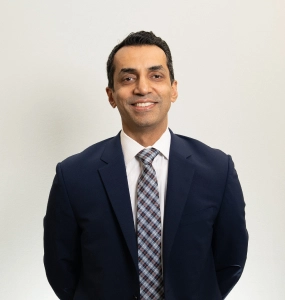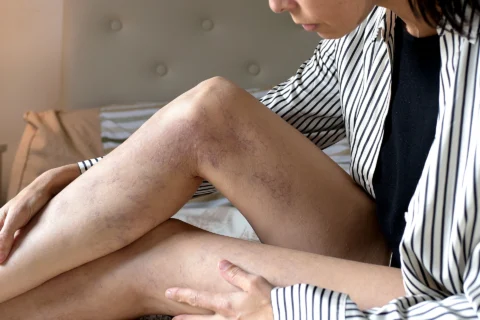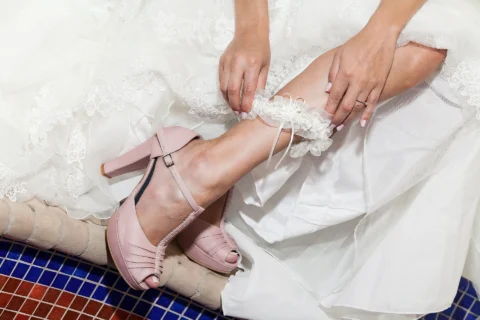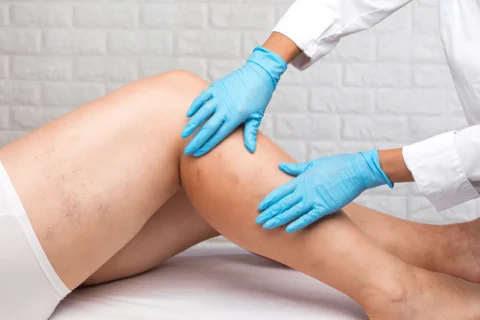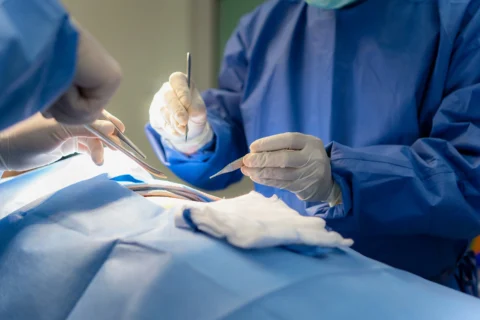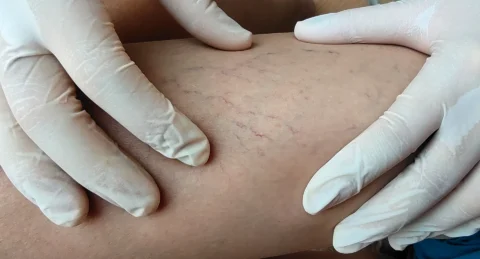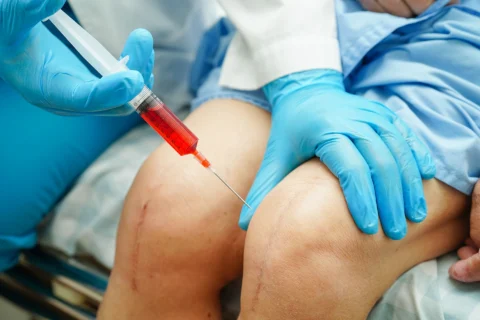Varicose veins and spider veins are a common condition formed by twisted and enlarged veins that may have blood pools or clots in them. They’re often found on a person’s legs but can appear as blue blood vessels with deoxygenated blood anywhere throughout the body. While they’re relatively harmless, people don’t often like the appearance of varicose or spider veins on their skin and try different methods to remove them.
So can cold showers get rid of your varicose veins? The short answer is no. Cold showers won’t completely remove varicose veins from your body but they can help minimize their appearance by helping your blood vessels to shrink.
Read More: Do Spider Veins Hurt?
Removing Varicose Vein with Cold Showers
Vein specialists have found that cold temperatures improve blood flow in veins and boost vein health as it helps shrink the veins. On the other hand, hot weather has been shown to promote vein dilatation and blood pooling. With the low temperatures, a cold shower provides, your body temperature drops, and your veins begin to shrink as a result.
While it makes it look like your varicose veins and spider veins are disappearing after your cold shower, they’re simply shrinking due to the cold. If you want to completely remove your varicose and spider veins, you’ll need to have a proper varicose vein treatment to do so as a cold shower will only temporarily shift them so they become less visible.
Other Vein Benefits of Taking Cold Showers
While cold showers can’t completely get rid of your varicose or spider veins, they do a good job of making them less visible. This in itself is a big benefit to taking cold showers and baths, but aside from visual appearances, cold showers and baths have many other benefits to vein health. Here are just some of the benefits cold showers can have on your veins:
1) Improved Blood Circulation
One of the main reasons for the formation of varicose veins is poor blood circulation in the area. When you have poor circulation, it’s possible for blood to pool and clot resulting in blue and purple veins being visible through your skin. Due to the cold temperature, cold showers actually boost blood circulation throughout your body.
When parts of your body get cold, blood rushes to those areas to stabilize your internal temperature, which causes it to circulate more. With increased blood flow, it’s possible for the cold water to shrink your varicose veins and prevent any new ones from forming.
2) Less Inflammation
It’s a well-known fact that cold temperatures can reduce inflammation throughout the body. With the inflammation of varicose and spider veins being a common attribute, taking showers with colder water has been said to help reduce its inflammation and treat some varicose vein bumps.
With less inflammation, your varicose veins will be less noticeable to the naked eye. Additionally, cold temperatures also help in the natural healing process of the body and can help address the vein damage found in varicose veins.
3) Pain Relief
While varicose and spider veins don’t often cause discomfort, it can be a severely painful experience when they do. Taking cold showers has been shown to help alleviate some of the leg pain linked to varicose veins. With the cold temperatures numbing out your nerve endings, the pain caused by your vein issues should subside temporarily.
Cold showers can’t remove varicose veins nor the pain they may cause permanently. If you’re having severe pain you may want to consider a varicose veins treatment and have them removed.
Learn More: How To Get Rid Of Spider Veins
How to Get Rid of Varicose Veins Effectively

While cold showers can’t remove your varicose veins completely, there are many other treatments out there that can. If you want to get rid of your varicose veins, you can visit any medical professional to assess your condition and direct you to possible treatment plans to address your specific concerns. Here are some things common treatments that could get rid of your varicose veins:
1) Laser Therapy and Vein Injections
Both laser therapy and vein injections have been shown to effectively get rid of varicose and spider veins on your body and are considered minimally invasive treatments when done by a vein specialist.
With both treatments, your varicose veins will be targeted and forced to collapse either by laser heat or an injected solution. Once the veins have collapsed and no longer function as a viable pathway for blood to flow, your body will naturally absorb effectively getting rid of the visible varicose veins on your skins’ surface.
Laser therapy and deep vein injections both have a success rate of over 90% with the treated varicose veins never reappearing. However, it’s important to note that while the treated veins won’t reappear, it’s possible to develop completely new veins in that area. To prevent new varicose veins from forming you may want to wear compression stockings after your initial laser or injections treatment.
2) Varicose Vein Surgery Options
If your varicose vein condition affects deeper veins in your body, your doctor may suggest surgical treatment to remove them. Vein stripping is a common surgical treatment that’s often used to target larger veins in your leg and can effectively get rid of your varicose veins.
Unlike laser therapy and vein injections, you’ll need to be put under general anesthesia and have 2 to 3 small incisions on your leg. While removing damaged veins seems to be more effective in addressing issues on varicose veins, vein stripping has also been shown to prevent further damage development to other veins in the future.
Vein stripping has been shown to have an 80% success rate in treating damaged veins and has a considerably short recovery time of 2 to 4 weeks. During the recovery period, you may be asked to do compression therapy and wear compression garments to aid in your healing process. After 6 months, you should be able to see the full benefit of the treatment against your varicose veins.
Get Rid of Your Varicose Veins Effectively at The Vein Doctor Center

While cold showers can give gratifying results to the appearance of your varicose and spider vines, they’re temporary at best. With your body temperature rising again after a cold shower, your varicose veins will return to their normal state and be visible once again. If you really want to get rid of your varicose veins for good without any risk factors, you should consider medical treatment options that can provide you the lasting results that you need.
Here at The Vein Center Doctor, we provide a variety of treatment plans from laser therapy to vein injections to address any venous concerns you may have and ensure long-lasting results for all our patients. If you want to know more about our services, call us today or book an appointment online.
Read More: Can Home Devices Eliminate Spider Veins?
